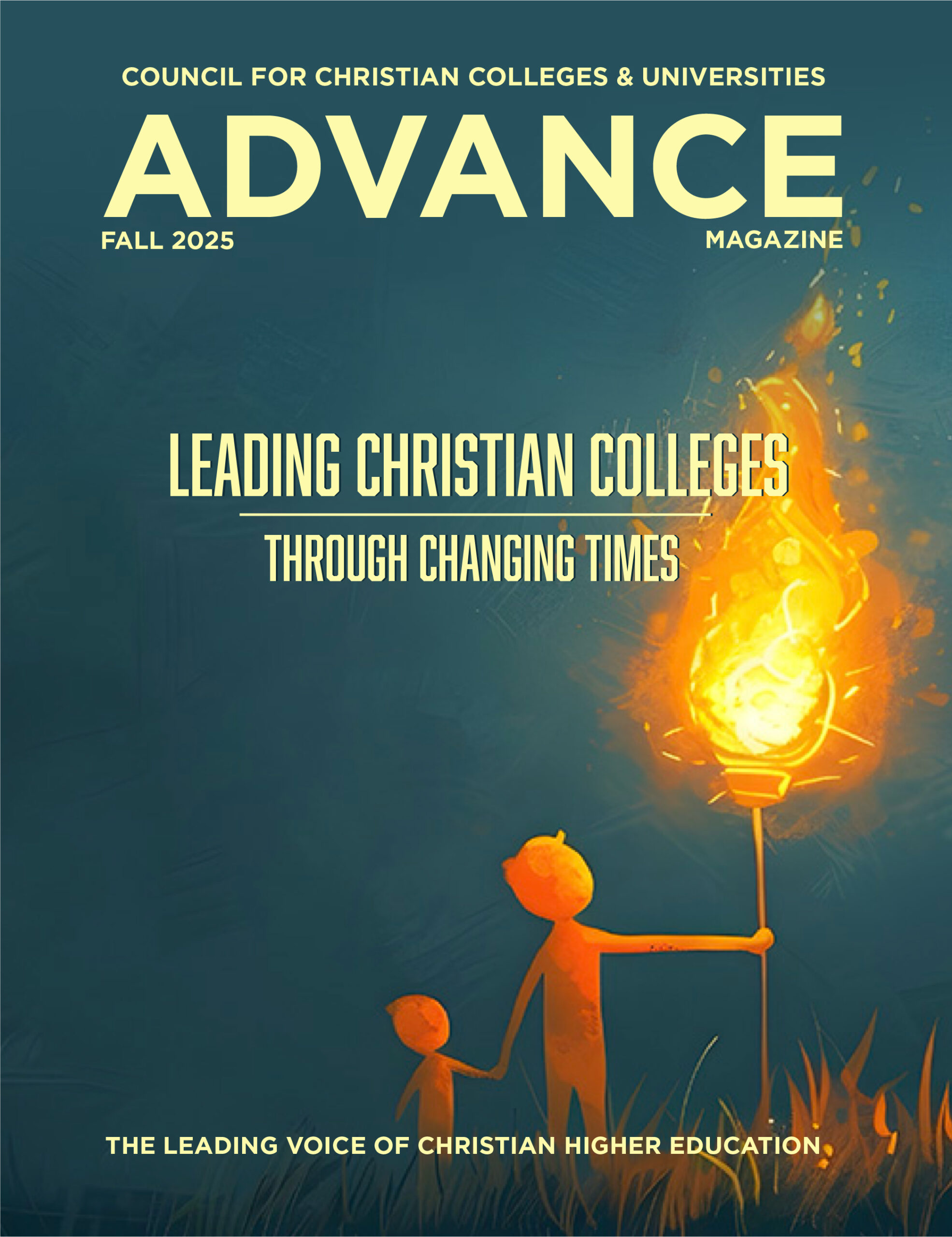Magazine
Among CCCU institutions, the phrase “integration of faith and learning” (or its shorter form, “faith integration”) is widely understood to be foundational to our work. But what is the integration of faith and learning?
In 2020, I was entrusted with a key role in faculty development on this very subject at Indiana Wesleyan University, where I also serve as an epidemiology faculty member in the School of Health Sciences. To prepare, I embarked on a rapid journey of reading and key conversations. For the previous five years, I had led an online class for CCCU faculty on integrating scripture into the teaching of health sciences, but now my assignment was much broader: promoting faith integration for all academic disciplines in ways that went above and beyond the integration of scriptural themes in coursework.
The voices of long-respected leaders in this field resounded with this challenge: “Do not let it be said of your university that everything outside of your Bible and theology department is indistinguishable from a secular institution.” This means that as important as things such as a robust chapel program, prayers before classes, and in-class and on-line devotional presentations are, they alone will not suffice. The coursework itself needs to be addressed. Until everything taught in every academic discipline has been subjected to the lens of an identifiably scriptural Christian worldview and adjusted as needed to be in alignment, the job is not done. This is not just about course materials, either — the teaching styles, behavior, and character of the professors must evidence both a growing, living personal Christian faith and a sincere journey of participation in this integration of faith and academic principles in their own work.
I was graciously able to share what I learned on this journey with a group of attendees at the CCCU International Forum in February 2022. The group included some of the top minds on faith integration in the CCCU, including Dr. Paul Kaak from Azusa Pacific, who has authored a 72-page manual on the subject and leads a team of faith integration scholars at APU. I was also honored by the attendance of President Joel Pearsall of my alma mater, Northwest Nazarene University, as well as my own university provost, Dr. Stacy Hammons. The session was a time of lively discussion, and so I share here the three categories we discussed, in the hopes that they might be useful for further discussion on CCCU campuses.
The Ongoing Spiritual Formation of Faculty Scholars
For there to be successful integration of faith and learning in the classroom, CCCU institutions need to support the ongoing spiritual formation of their faculty. To be clear, this does not replace the responsibility each individual faculty member has in their own development through things like church attendance or Bible studies, nor is it the same kind of development that a church provides.
The nature of this development also might look different from campus to campus. For example, in my own position, I have to share my testimony on how I have been learning and growing in faith in front of my colleagues twice a year.
The challenge here is for each institution to decide what degree of accountability for spiritual formation is appropriate, given the wide variety of institutional experiences and expectations across the CCCU. Suggestions I floated, such as requiring each faculty member to meet regularly with a spiritual accountability partner or requiring a specific scripturally based reconciliation pathway for identified conflicts on the job, were met with interesting facial expressions.
Dealing with the Discrepancies in Worldview
This involves helping faculty navigate the discrepancies that can arise between Christian principles and generally accepted secular dogma within an academic field. One of the most helpful ways to do so is utilizing the Christian philosopher and faith-learning expert William Hasker’s three models:
- Compatibilist: This approach comes when a scholar sees no tension between a discipline and the Christian faith; they are compatible and thus easy to exhibit in discussion and exemplify in practice.
- Transformationalist: Scholars in this approach see some tension between the Christian faith and a discipline; they see elements in the discipline that offer necessary insights and perspectives but then must go further in “remaking” or “transforming” the discipline into a Christian orientation.
- Reconstructionist: In this strategy, scholars see the tensions between a discipline and the Christian faith to be so fundamental that the discipline needs to be “reconstructed” from its foundation with Christian principles; the secular foundations are too anti-Christian to be valid.
One might suppose that a scholar’s choice from among these models is governed principally by the kind of discipline in which the scholar works. In subjects like biostatistics, for instance, one is hard-pressed to find anything in the coursework that could possibly be seen as conflicting with a Christian worldview. At the other extreme, subjects such as anthropology, psychology, and philosophy involve multiple concepts that have propelled debate that has raged for centuries both among Christian scholars and between Christians and those outside the faith. Here transformationalist and reconstructionist models are likely to be recommended.
However, interestingly, both among the scholars in the room in Dallas and among about 70 faculty who participated in webinars on faith integration at Indiana Wesleyan University in March, not everyone in the same discipline agrees on the choice of model. For instance, some nursing faculty, citing the faith-based roots that have nourished the nursing profession for the last two centuries, lean in the compatibilist direction, while others, wary of trends in the profession on subjects such as sexuality and reproductive health, urge a transformationalist approach.
The good news is that all the scholars I have interacted with agree that faith integration cannot be left to a few leaders in the field — it is the job of every faculty member. That gives the Holy Spirit a broad avenue to do mighty acts through our faculties, on behalf of our students.
Developing an Approach that Works for All Students
As colleges continue seeing an increase in students who have little or no familiarity with Christian principles, it is important that whatever faith-integration approaches are developed on campus work both for students who are well-versed in scriptural principles and for those with no faith background.
An important first step is making sure the classroom is a place free from peer or professorial hostility — the adage “no bad questions” comes to mind. It might also be helpful to require students to read and respond to scripture texts as part of a discussion so as to make sure everyone has, indeed, read and considered a Bible passage.
This line of presentation received broad acceptance from the group, as fellow scholars mentioned that we should be wary of how much prior knowledge of Christian principles and Bible passages we should expect of students in class. It takes more work and can be a struggle, but taking the time to help students learn biblical ideas and background knowledge is important in helping them succeed in understanding and applying their faith to their work. After all, as precious and important as Christian higher education is, it is the means to an end — that end being the transformation of future generations for Christ.
Reginald Finger, M.D., is an assistant professor at Indiana Wesleyan University’s School of Health Sciences.
Recommended Reading
David S. Dockery, Renewing Minds: Serving Church and Society Through Christian Higher Education (Nashville, TN: B&H Academic, 2008)
William Hasker, “Faith-Learning Integration: An Overview,” Christian Scholar’s Review 21, no. 3 (March 1992): 234-248
George M. Marsden, The Outrageous Idea of Christian Scholarship (New York: Oxford University Press, 1997)
Stephen Moroney, “Where Faith and Learning Intersect: Re-Mapping the Contemporary Terrain,” Christian Scholar’s Review 43, no. 2 (Winter 2014): 139-155



